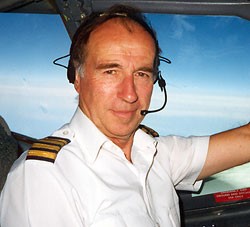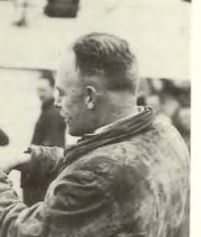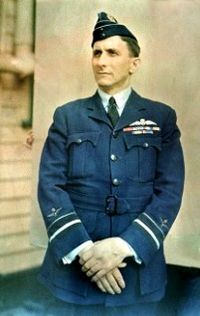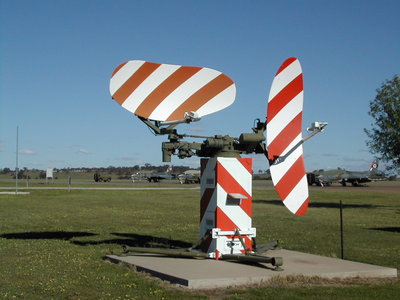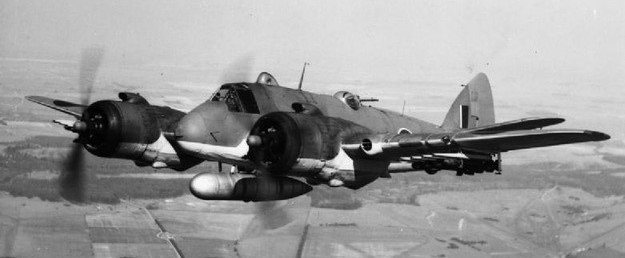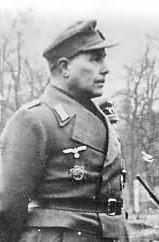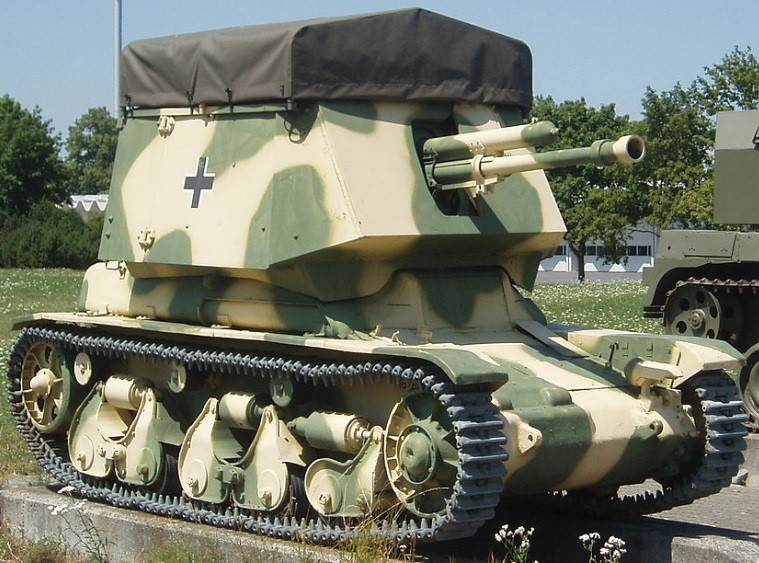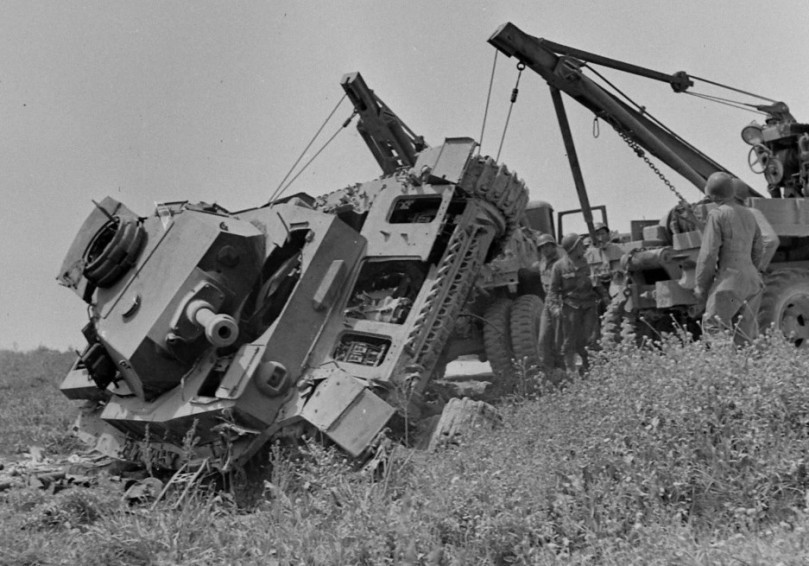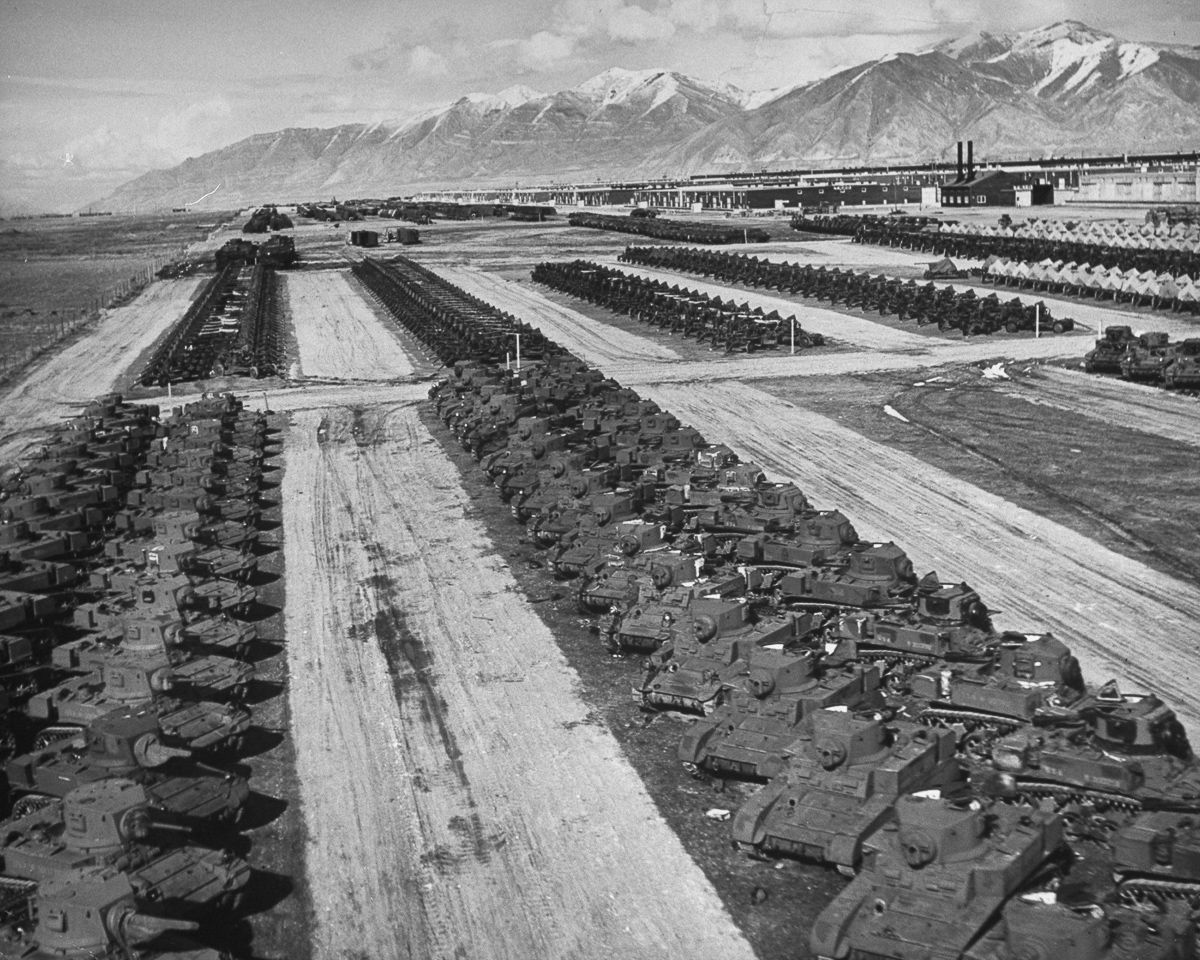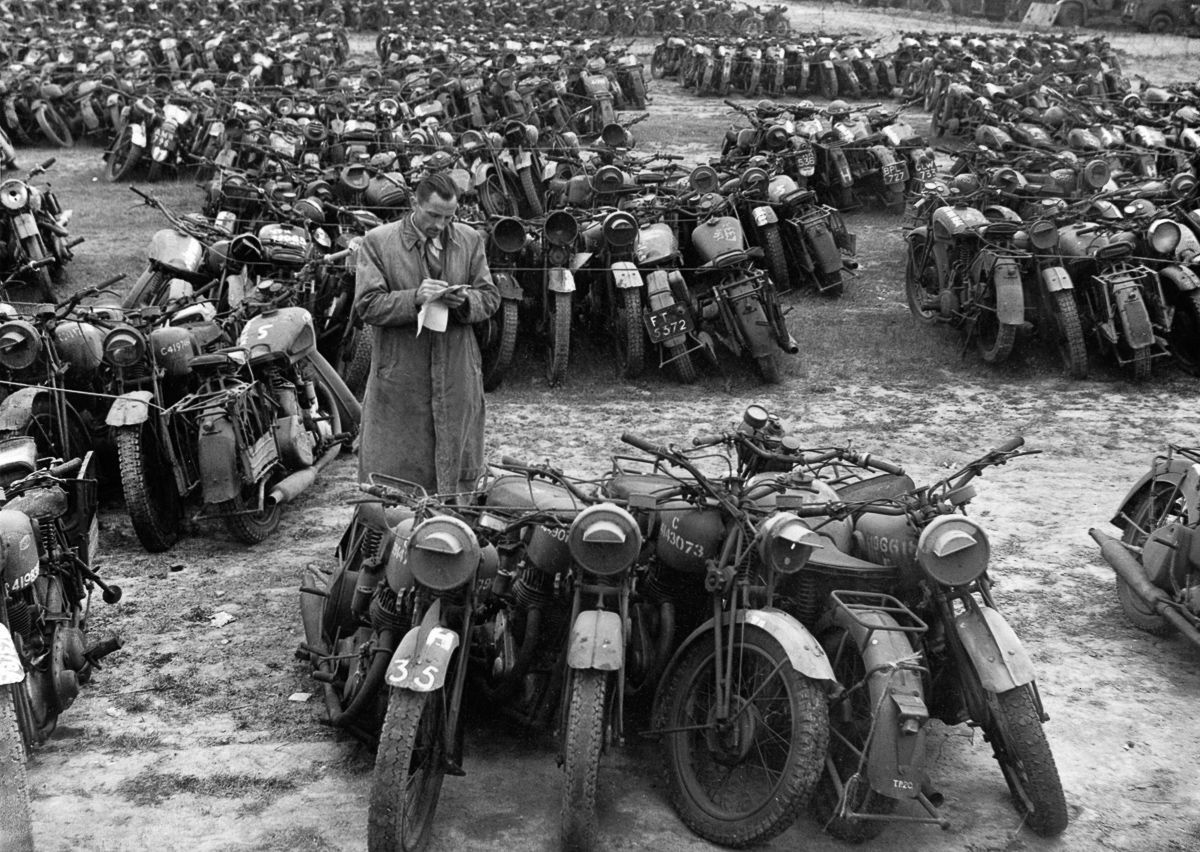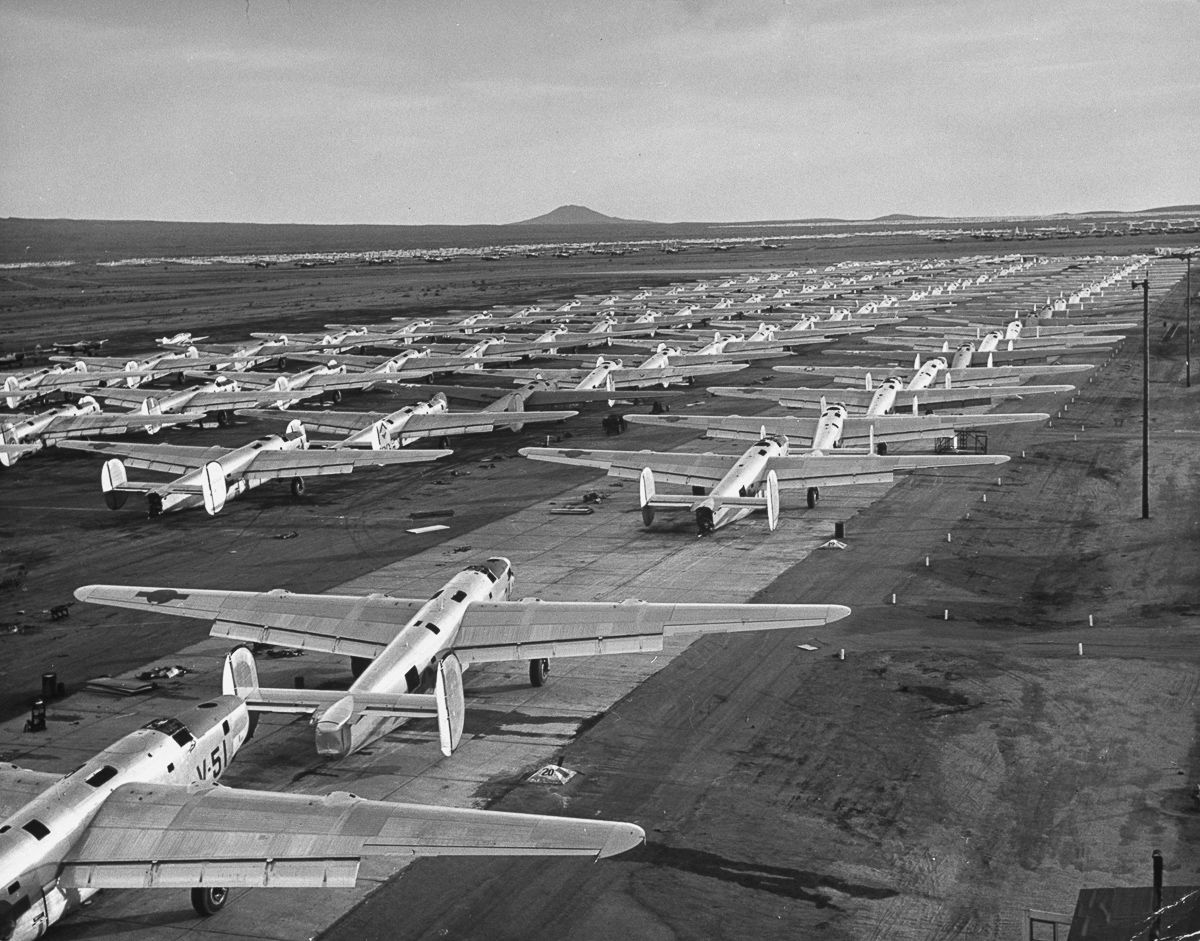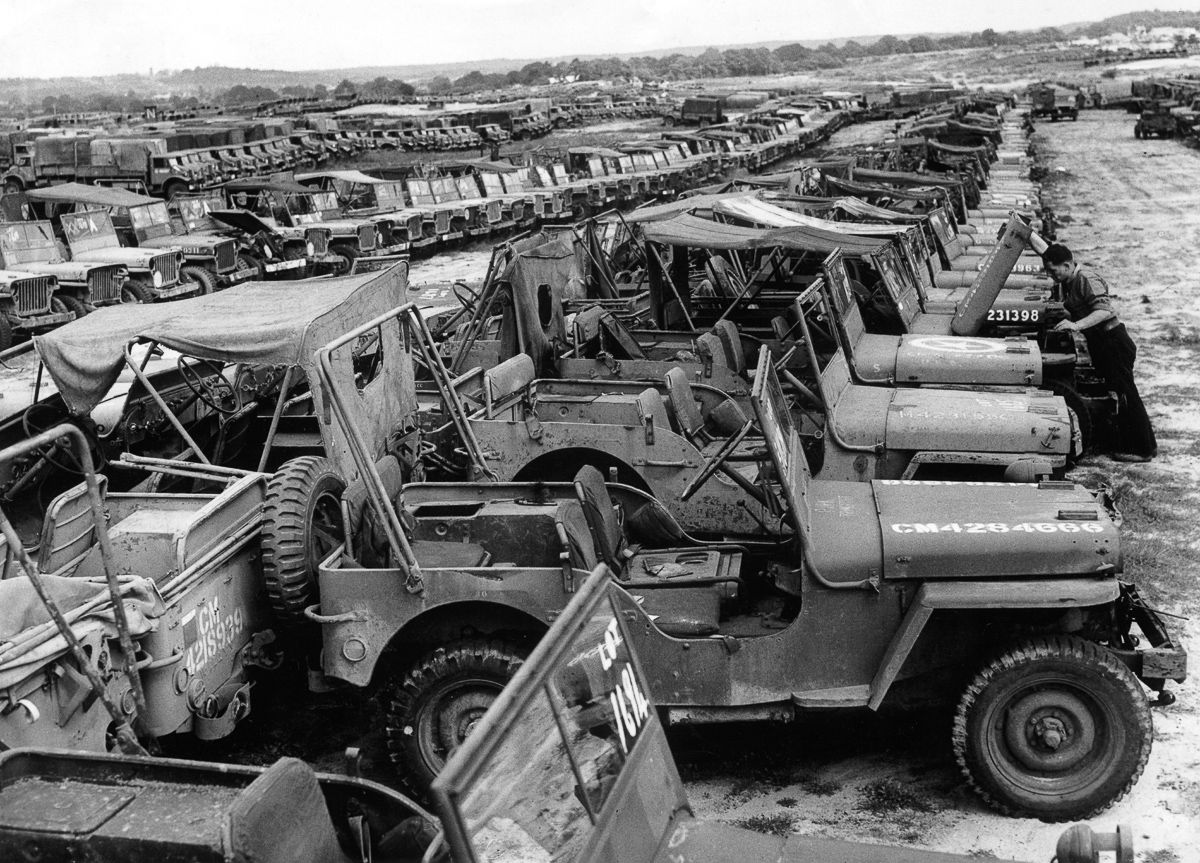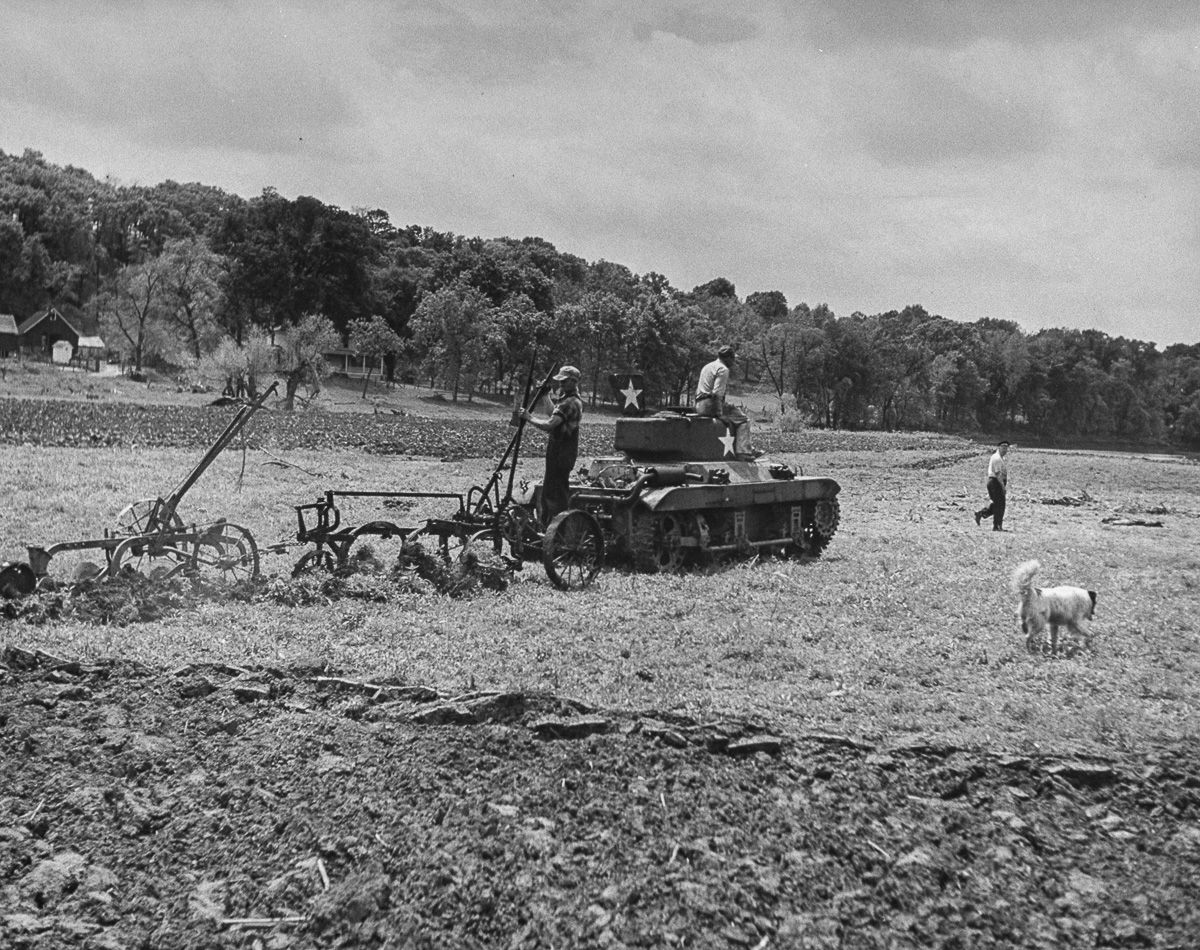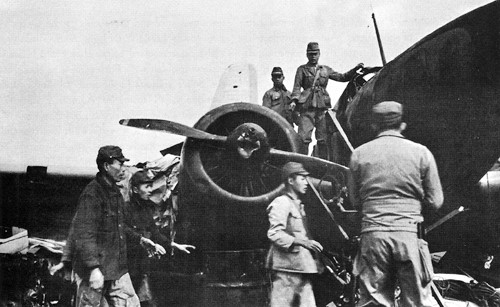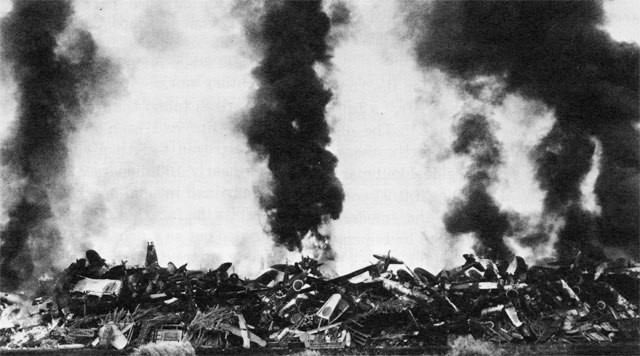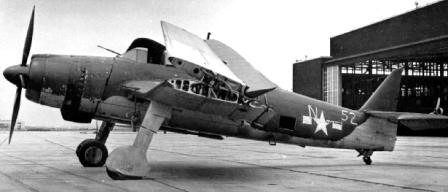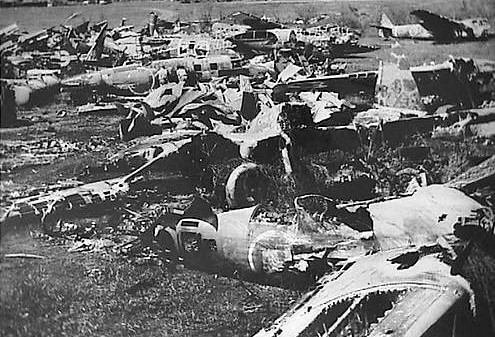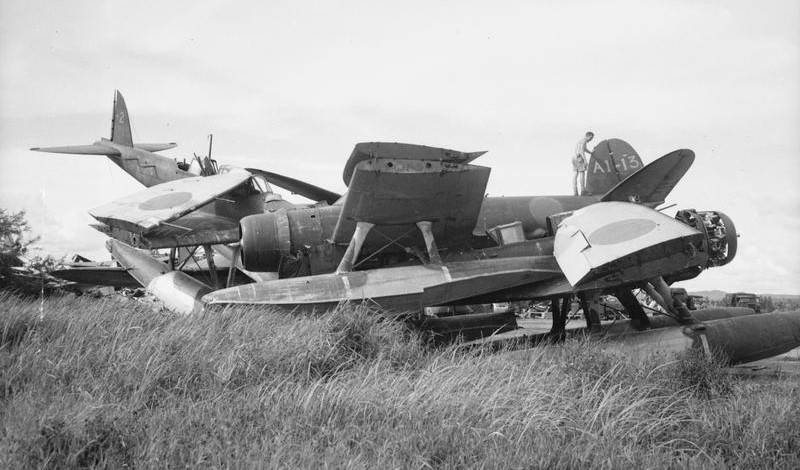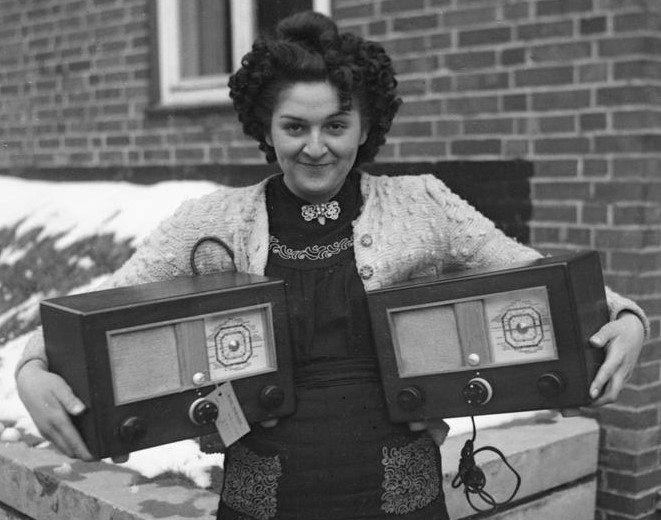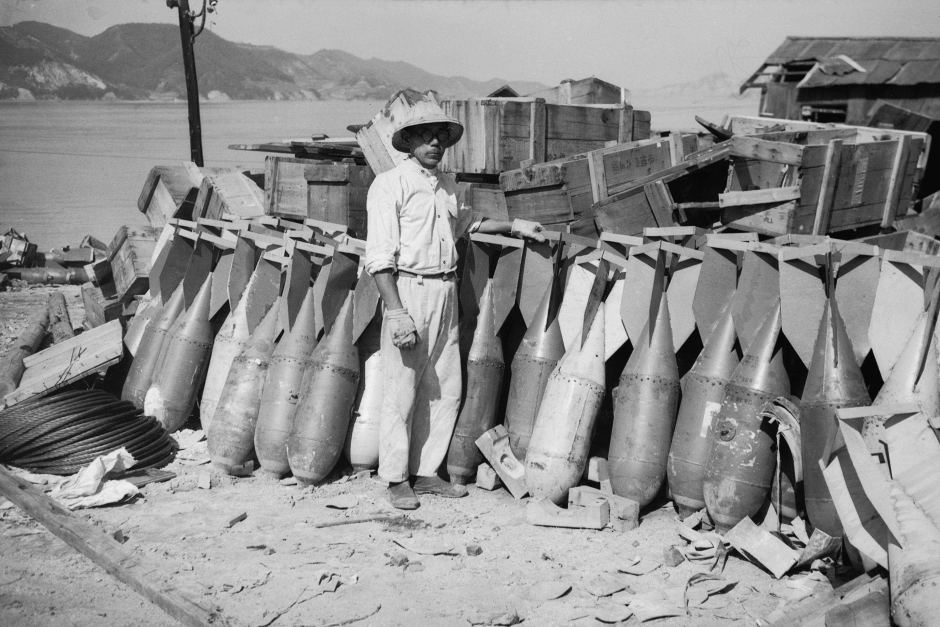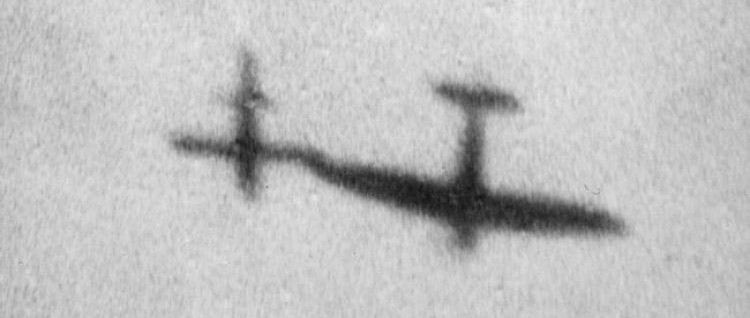|
|
||
|
||
|
Privacy Policy | Editorial Policy | Profit Policy | Join the Association | List of Members | Contact us | Index | Links |
||
|
Back Go to page: 1 2 3 4 5 6 7 8 9 10 11 12 13 14 15 16 17 18 19 20 Forward
|
||
|
John Laming Aircraft and other stuff. |
||
|
Contents
How did the RAF tackle the V1 bombs?
|
||
|
On the 30th of January 1994, Australia lost one of its true pioneers of military aviation, when AirCdre. Patrick (Paddy) George Heffernan, O.B.E., A.F.C, passed away. Paddy’s background covers some 90 aircraft types from the DeHavilland Moth to the early jets and included fighters and heavy bombers both in England and in Australia. It includes test pilot training at Martlesham Heath. He was a leader who had a very clear vision of what was required and how to achieve it. As part of this he knew the difference between a spade and a shovel and on occasions told his ‘betters’ of this difference, the result being that his career may have suffered accordingly.
He had the clear understanding of the significance and place of history. This was demonstrated by his role in the preparation of the history of the RAAF for 1921-39 and of the RAAF Academy. The following article was written by Paddy and appeared in the late Trevor Boughton’s “Man and Aerial Machines” magazines.
My Favourite Aircraft.
Let’s start with the Dakota. I first flew one in December when I took over No. 8 Squadron at Canberra which was then equipped with four DC-3’s that the Air Force’ had ‘obtained’ from Australian National Airways. Clarrie Scott was the then senior captain of A.N.A. My conversion was to be seated in the left hand seat, while he was in the right hand seat, and then told “You’ve got it! You have been flying Blenheims and things like that and you have five to six hundred hours on twins. So off you go!’ At the end of the first circuit he suggested that I should go solo but I declined as I knew that I had not mastered the effect of the short nose on take-off.
|
||
|
|
||
|
Apart from the very short nose in front of me, the Dak responded just like any other twin engined aircraft. You had to be careful when you applied the power. You applied it fairly gradually and Clarrie’s advice was to stand on the brakes until you had about half power, then release the brakes and increase to full power but at the same time keeping the tail down until you had rudder control. This was about 60 mph in those days. Having become airborne and doing a few turns and a couple of dummy landings on a nice flat cloud, I found it acted just like any other aircraft.
Clarrie then said “Have you ever spun a Dak?” “Good God no!” “I’ll show you.” He promptly stalled it and did about three turns of a spin. I watched the wings wrinkle and crumple, and things like that, and Clarrie said “You see. it works like an ordinary aeroplane! “Well, I think after about three and half hours of this so called dual, Clarrie said “O.K. You have got her.” He hopped out and I proceeded to carry on doing my normal aircraft duties as a squadron pilot with the Dakota.
I was caught out once, I suppose I then had about 25-30 hrs. on the type. when I was coming back to Canberra after attending Eastern Area in Sydney. It was fast becoming dark as we flew towards Canberra and my second dickie didn’t know anything about where the switches for the lights were. Luckily, just at dusk, by playing around with a variety of switches I managed to turn some headlights and cockpit lights on. I called up Canberra to put the Chance Light out, a magnificent portable flood and I found no difficulty in making my first night landing in the Dak
I never tried to do a three pointer until I had far more hours up but Keith Virtue, who was the acknowledged expert on Dakota’s at the time used to do three pointers without any trouble at all. He would land off a side slipping turn and when just about on ground, he would pull the yoke back and the old Dak would sit down just like a chook on a nest. The best way to keep a Dakota on the ground, was the moment you landed was to pull the flaps up; nothing on God’s Earth except a plug of dynamite would move a Dakota up after that.
Let me give you some idea of the stupidity that existed about the Dakota. Just before we went to Malaya in 1950 “Jumpy Joe” Swinburne managed to prang one taking off. He was practising an engine failure on take-off. So then the Chief of Air Staff (the late Sir George Jones - right) issued an order banning asymmetric flight under 3,000 feet. That was the silliest order ever issued by anybody in authority in the Air Force. Once you had a Dak up to 1,000 feet it would keep going ad infinitum on one engine provided you were not overloaded beyond 26,000 lbs. If the engine quit at the point of rotation on take-off it became a bit tricky to decide whether you tried to become airborne or stayed on the ground.
Anyway, we got up to Malaya safely. Because our Daks were so immaculate, our stewards dressed in white overalls and served morning tea on stainless steel trays and things like that, the R.A.F. V.l.P.’s decided they wanted to fly with us. Their V I P pilot standards required asymmetric flight had to be practiced on take-off. So our blokes didn’t know what to do and they approached me for help. As the A.O.C., No. 90 Composite Wing, I wrote to the Chief of Air Staff pointing out that we were becoming demoralised at getting skyjacked by the R.A.F. about being frightened about single engine performance and so on. The answer back didn’t help at all! It hinted that the Chief of Air Staff did not take very kindly to Grp. Capt. Heffernan’s comments. I then visited Air Mshl Frank Fogarty but his pithy observations didn’t help either!
Any rate, I was just about to write another letter when the message arrived that indicated when we were flying R.A.F. VIP’s, we were to comply with their standards. So our blokes were happy and this is what CO.’s were there for –to take the kicks in the backside from those above and to protect the rest of the mob.
Anybody that ever complained about a Dak just didn’t know what to do with it. That was the whole thing! I used to take one up to Ballarat when they were doing the Ground Controlled Approach landings when that was in vogue. You could come flying through incredible Ballarat clag and muck and stuff like that and so long as you knew you had a good operator in the van, he could put you down on the end of the strip, within 10 or 20 yards of where you wanted to go. I think I finished up with 800 hrs. on them. They remained one of my favourite types right through my Air Force career. I almost wept when I said good bye to my last Dakota.
The Beaufighter was a much maligned aircraft and people were scared stiff of it mainly because they would not fly it as a Beaufighter. You had two thumping great Hercules engines up the front end and a very squat short fuselage. So consequently, the moment you applied the power the torque took over and the thing started to swing. So the drill to take-off in a Beaufighter was to keep the tail on the ground until you had rudder control and then you went off like a cockroach - you sought of sprang into the air. After that it was no trouble at all.
|
||
|
|
||
|
Single engine flying in a Beaufighter presented few problems owing to the tremendous power of the Hercules XVII engines but on the other hand on one they would keep going hour after hour with no trouble at all.
I don’t think there is much one could comment on the Beaufighter. What put the scare into a lot of people was when a fellow by the name of Gulliver was taking off from Labuan and allowed the thing to swing into a line of Kittyhawks or Mustangs and wrote himself, the Beau and everybody off in a cloud of smoke. I was Director of Training and had to recall the whole squadron back to Narromine and put them through a quick conversion course under the watchful eyes of Johnny Hubble who finished up as an Air Vice MshI. D.S.O., A.F.C. etc.
The day I chose to go to Narromine it was blowing about 100 m.p.h. but I managed to land on the grass in front of the flagpole, opened up the lid, put on my brass bonnet, scrambled over the edge and said “Why isn’t there any flying going on?” “Oh it is too windy sir!” I said ‘Get out there and get airborne. If I can land on this bit of grass, surely you fellows can. You’ve got operational training on Beaufighters!“ So consequently when the Mustangs flew up to Iwakuni they had a Beaufighter escort and there was not one spot of trouble from then on with Beaus.
You had to take each aircraft as you found it. In other words the Dakota and the Beaufighter, although both had similar features such as short noses, they still had to be flown as a Dakota and as a Beaufighter respectively.
The Liberator wasn’t too bad but wasn’t highly regarded owing to a very poor asymmetric performance.
The Mustang was another favourite of mine and when I was A.O.C. at Townsville, the only other competitor for the Mustang there was Sgt. John Laming who finished up as a SqnLdr. A.F.C. It used to a amuse me, the phone would ring and Jack would say ‘Sir, do you want the Mustang to-day?” “No thanks very much, you can have it. You break it though and God help you!” It was a beautiful aircraft and when you opened the throttle fully to get 65 lbs. of boost, you really got a clip in the back. You had to use that power when you were target towing. That used to be one of my favourite occupations, when I had nothing better to do, to tow a target for the gunners in the old Lincolns but after about half an hour of this even my stomach gave up the ghost and I would call it quits for the day and hand over to Jack Laming.”
|
||
|
|
||
|
|
||
|
Wars are very wasteful and costly things, they are an enormous and horrendous waste in human life and an equally enormous waste of resources and equipment. Countries at war churn out unmeasurable amounts of stuff from the smallest bullet to the mightiest battle-ship, but what happens to it all. There are no A class items in war, everything becomes C class the minute it hits the battlefield. It’s written off immediately. A lot is either lost, pinched, written off, destroyed or just left beside the road as the troops back-peddle – but it doesn’t just rust away, recycling is alive and well and a lot of countries go through the stuff that is left by the other side and if some of that stuff is useful, it’s gathered up by the winning team, taken back to the shed, cleaned up and re-used.
During World War 2, Germany, which was running short of raw materials, had a policy of gathering everything from handguns to fighter aircraft all of which were taken back to points called Sammelstelle (Collection Points) and then shipped back from the front lines for disposition.
A notable figure during WWII regarding captured weapons was a Major Alfred Becker (left), commander of the 200th Assault Gun Battalion of the German 21st Panzer Division. After the 1940 fall of France, Becker was alarmed at the fate of Allied weapons. Quality captured gear was being taken as personal or unit trophies, junked, or just pushed into rivers to clear roads. On his own time, Becker established a central office for cataloguing, collecting, and modifying Allied weapons. He designed no fewer than 25 different adaptations of Allied vehicles, including French hulls with Czechoslovak guns, Dutch trucks towing French guns, British hulls with German guns, and so on.
One of Becker’s creations (right) was a Czechoslovak Škoda A6 anti-tank gun inside a German enclosure set on a French Renault R35 tank hull. After Germany invaded the USSR, use of captured Soviet weapons became widespread.
As the war progressed, all of the major armies had repair and recovery units specializing in getting salvageable equipment off the battlefield. The Soviet and American armies became very adept at this, in both cases not only were there specialized recovery units but some were specialized in taking equipment off “hot” battlefields, even stripping or towing vehicles under the cover of darkness.
In China, civilian scavenger corps were allowed to follow units; in exchange for turning over militarily valuable things like guns or truck parts, they could keep whatever else they found.
When World War II drew to a close in 1945, all combatants had a massive surplus of military vehicles on their hands. The United States alone had manufactured approximately 294,000 aircraft for the war and many that had survived the war were not worth the expense of transportation back to the States. They were just dumped or destroyed in their theatre of operation.
Of the planes that did return, many were stripped of valuable components and melted down for their aluminium.
|
||
|
|
||
|
|
||
|
A pair of US Army M1 wrecker trucks right the tipped-over wreckage of a Panzer IV during a battlefield clean-up. Once the destroyed German tank was right-side up, it could be towed or dragged away by other vehicles.
|
||
|
|
||
|
Surplus US Army vehicles sit in storage at a US facility.
|
||
|
|
||
|
Surplus motorcycles in England are bundled in groups of five to be sold as scrap
|
||
|
|
||
|
At Kingman Air Force Base in Arizona, an estimated 5,500 aircraft were stored and scrapped in 1945 and 1946.
|
||
|
|
||
|
Americans were so eager to get their hands on cheap surplus Jeeps that auto companies urged the government to leave them overseas, fearing they would cut into new car sales.
|
||
|
|
||
|
While many vehicles were sold for metal and parts, others were repurposed for civilian use. Tanks and half-tracks were disarmed and reformatted as tractors and bulldozers.
Unused Navy ships were held in reserve, disassembled for parts, scuttled to form artificial reefs, and even used as targets for nuclear tests in the Pacific Ocean.
|
||
|
|
||
|
Surrendered Japanese aircraft were to be immediately destroyed by the fastest possible method, usually by burning. In 1945 there was a serious concern that rogue Japanese pilots could fly final kamikaze missions against occupation forces. Prior to demolition, the Japanese were supposed to paint green crosses over the rising sun roundel and/or remove the plane’s propeller; both instructions were obeyed to varying degrees. It was decided (with some exceptions) against ferrying Japanese planes around; instead they would be destroyed where they stood. This was not easy; in the territories occupied by the USA (the home islands and southern half of Korea) there were about 300 facilities ranging from grass strips to major airbases. The US Army’s 637th Tank Destroyer Battalion was very prolific, destroying about 1,500 Japanese aircraft in Honshu in the first half-month of the occupation. Its methods were to hose parked planes down from a commandeered Japanese fueling truck driven past, or, to run over the planes with their tracked vehicles. Other units used infantry flamethrowers.
|
||
|
The photo at right shows 200+ Japanese aircraft being burned by the US Marine Corps in late 1945 at Omura airbase in western Kyushu. The Japanese imperial army had planned to make this facility a centre-point in the planned defence of the home islands (operation “Ketsugo”) and it was well-stocked with warplanes.
|
||
|
|
||
|
As time went on and it became clear that the occupation was not going to be opposed, the policy was relaxed and aircraft were dismantled in a way more useful to civilian recycling instead of brute burning.
One Japanese warplane the USA was interested in was the Aichi B7A2 “Grace”, a high-performance carrier-based attack plane. The “Grace” outclassed it’s US Navy contemporaries and was actually faster than a “Zero” fighter. Only 114 were built during WWII and only two Japanese carriers (IJN Taiho and IJN Shinano) had flight decks that could handle the “Grace”. Both were sunk before any could be stationed aboard, so the B7A2 was never used in its intended role and rarely encountered during WWII. This plane was transported to Maryland after Japan’s surrender for further study in 1946. The US Navy’s abandonment of horizontal torpedo attacks, and the dawn of the jet age, made the study irrelevant.
|
||
|
The Kawasaki Ki-48 “Lily” was one of the imperial army’s better tactical bombers. This example, collected in occupied Japan in October 1945, was briefly studied by the American military. The Ki-9 “Spruce” biplane ahead of it was burned immediately. |
||
|
|
||
|
This field of abandoned Japanese warplanes in the Dutch East Indies was bombed by the Netherlands air force in 1946. A small but not trivial number of Japanese personnel allied themselves with Indonesian separatists at the end of WWII, including some pilots.
As Allied personnel levels dropped, the pace of clean-up slowed in late 1946 and 1947.
|
||
|
|
||
|
Aichi E13A “Jake” seaplanes at RAF Seletar (below) near Sembawang, Singapore after Japan’s 1945 surrender. This was a very critical base to Britain and clearing the airfield was more important than the aluminium scrap value, so the Japanese planes were bulldozed into a pile out of the way.
|
||
|
|
||
|
Cleaning up aircraft after and during the war was only a small portion of the problem. There were millions of mines laid in the waterways of the world, millions of mines laid on land, huge numbers of unexploded bombs, as well as countless tons of stored explosives in sheds everywhere. The Royal Navy alone laid over 100,000 mines in the sea in a stretch from Scotland to Iceland. Overall it was estimated that 600,000 sea mines had been laid in the European theatre. These had all to be cleaned up.
The Völker Radiogerät (People’s Radio Set) was manufactured by Huth-Apparatebau in occupied Germany under Allied supervision during the late 1940s. It was a cheap civilian radio receiver that recycled components of WWII German military radios.
The cleaning up of chemical weapons was usually a problem. The quickest and cheapest method at the time, and most problematic today, was done by the Royal Navy which carried out a mass dumping of bulk storage tanks of German chemical weapons into the North Sea. There were five main dumping areas: one in the deep North Sea; one in the Belts south of Norway; the “main” east site which was in the deep eastern Baltic Sea roughly equidistant from East Prussia, Sweden, and Latvia; the other east site off Denmark’s Bornholm island; and finally a shallow-water site in the Baltic near Kiel.
The two North Sea dumping sites were done mainly by the Royal Navy in the summers of 1945 and 1946. For the most part, the material dumped was bulk-storage containers of chemical weapons not yet loaded into shells or bombs and also any form of Germany’s new nerve agents. Tabun (GA), sarin (GB), and soman (GD) nerve gas was maybe Germany’s best kept secret; the Allies did not even know of them until the Soviet army overran a stockpile in early 1945. Tabun and soman are ultra-lethal and behave much differently than mustard gas (HD) or phosgene (CG). Less samples taken for copying, the western allies dumped as much of this as possible into the sea as fast as possible. Today, the deep North Sea site is, apparently, not an issue but the Norwegian and Danish governments are both concerned about the Belts dump site, which is in less than 2,000′ deep water. Most of the dumping there was by scuttling barges or inoperable cargo ships; of the 36 known craft the Norwegians consider 15 to be a risk.
A much more serious problem has been the two east sites, which were used almost exclusively by the USSR after Germany’s surrender. About 40,000 tons of chemical weapons (with 15,000 tons of the actual chemicals) were dumped there between 1945-1949. At sea the chemical weapons were either hand-dumped one by one, hand-dumped by the pallet, or loaded onto wrecked German ships which were then scuttled at the dump sites. All of the methods had issues. En route, sometimes chemical weapons were jettisoned by the crew to lighten the ship during storms. A number of the decrepit scuttling candidates sank altogether en route. At the dump sites, hand-dumping was labour-intensive, while dumping whole wooden crates caused a “slow sink” where ordnance would drift laterally on the way down instead of quickly going to the bottom.
As the Soviet program went on, they increasingly routed dumps to the Bornholm site as too many ships were foundering on the way to the main eastern location. The Bornholm site received many more tons than had been planned. There are strong currents in this area and German chemical weapons have been found as close as 10 miles off Sweden and 40 miles off Poland, meanwhile on Bornholm itself, chemical weapons sometimes actually wash ashore.
Throughout the Cold War, there were usually three of four instances a year of Baltic fishermen snagging dumped chemical weapons in these sites. This changed between 1989-1992 when there were 160 incidents in 36 months.
The situation in the Far East in 1945 was quite different. Japan’s chemical stockpile was smaller and less sophisticated than Germany’s; on the other hand, (along with Italy) Japan was one of two nations to use chemical weapons during WWII and by far and away the most prolific user. Japanese use of chemical weapons against China is well-documented and estimated to have cost China 10,000 casualties.
After the Emperor’s 15 August 1945 surrender announcement, orders were issued to forces on the Asian mainland to destroy in situ any and all chemical weapons in their possession. Some units in Manchukuo possessing chemical rounds were already in motion due to the Soviet attack. None were properly destroyed, many were thrown into Manchuria’s Nen river, others were buried wherever the possessing unit happened to be at the time. This led to a scattershot effect as small quantities (sometimes one or two individual shells) was buried along the side of a road, in a culvert, or wherever. By intent, none of the locations were marked.
When China’s building boom started in the 1980s this increasingly caused problems as workers in formerly rural areas struck long-buried chemical weapons. Due to the haphazard way Japan’s chemical warfare effort ended, these ranged in quantity from lone individual mortar rounds, to a find of 193 artillery shells and four 44 gallon drums in one location.
War doesn’t end when the guns go silent, sometimes the clean-up can take longer than the war itself.
|
||
|
A man walks into the records office and asks to change his name. The clerk is not keen on helping but asks the man's name and the man replies "My name is Adolf Stinkfoot." The clerk is sympathetic and decides to allow the man to change his unfortunate name. "What do you want to change it to?" asks the clerk, the man replies "Maurice Stinkfoot."
|
||
|
How Spitfire pilots really ‘rammed’ a V1 Bomb out of the sky.
A Royal Air Force Wing Commander has described how Second World War Spitfire pilots might have used their airborne skills to tip V1 Flying Bombs out of the sky to bring them down. The tactic has become the subject of urban legend, with many social media commentators discussing if the method is simply a myth, or whether pilots really did use this risky tactic to bring down the feared bombs that were also known as buzz bombs or doodlebugs and which were the early forerunners for modern drones or cruise missiles.
|
||
|
|
||
|
Wing Commander Nick Robson, of the RAF Air Command said: "This was not a routine action. "It was innovation of the highest degree of skill from our pilots of the 1940s. The bumping action was a last resort. The idea was to get the wing of the plane as close to the missile as possible.”
Spitfires often scrambled to intercept a V1 when one was detected in the airspace. It is thought that some pilots would not shoot down a flying bomb but instead use the tip of their aircraft’s wing to bump the wing of the V1 – throwing its gyroscope off kilter and in effect ramming the flying bomb out of the sky, forcing it to nosedive to the ground. Pilots are said to have used the tipping method in a bid to save their limited ammunition or as a last resort once they had expended all their ammunition while still airborne. The tactic is also thought to have mitigated some of the risks involved in shooting down a highly explosive flying object, as V1s were packed with 1,000kg of Amatol-39, a mixture of TNT and ammonium nitrate, and pilots often had to fly in close to them to take a shot, especially as the pulse-jet-propelled doodlebugs flew at speeds of up to 400mph.
Spitfires reached speeds of about 369mph which meant that pilots had to target a V1 by diving from higher altitudes, about 5000ft, to build up enough speed to allow them to close in on their target at ranges as close as several hundred yards which meant that debris from an exploding doodlebug sometimes shattered through a pilot’s fuselage. If a pilot could dive in and gain enough speed to fly alongside, the tipping method is thought to have saved them from any blast risks, albeit that the tactic posed enough danger in itself.
The ‘wing tipping’ tactic is said to have involved impressive levels of skill in flying given the risks of things going wrong, including misjudging distances and risking a collision if wings hit each other with an unintended impact. However the skill of the Second World War pilots ensured that the wing of a Spitfire did not need to actually ‘hit’ a V1 wing – but instead used an ingenious method of using airflow to throw the flying bomb off course.
|
||
|
|
||
|
The V1 is what we would call today a ‘drone’ – a pilotless missile – that came off the rails, it was pointed towards London, probably from northern France and it was just fired. It was literally fire and forget. The problem back then was shooting it down from the ground was very difficult – they were very fast and also very difficult to see, so they had to find a way around it. Because of the difference in air pressure above and below the wing – as an aircraft gets closer it is actually touching the wing. The different air pressure (wingtip vortexes) at the tip of the aircraft would be enough to cause a disturbance in the aerodynamics around the V1’s wing which was then enough to knock it off course, disrupt the gyroscopes and then get it to crash into the ground.
|
||
|
A passenger train is fully loaded and a German soldier, on leave, shares a compartment with an old lady, a beautiful young French woman and a young French man. The train enters a tunnel and no one can see anything. A kiss is heard, then a hollow slap. When the train comes out of the tunnel, the German has a horrible black eye. The German soldier thinks. 'The French man gets the kiss and I get the blame!' 'The old lady thinks "She's a smart young lady, don't let him get away with that." The beautiful young woman thinks "Why would that German kiss that old lady?' The Frenchman thinks, "Got away with it, I kiss the back of my hand then smack the German in the face and no one suspects me!'
|
||
|
|
||
|
|
||
|
|
||
|
|
||
|
|

